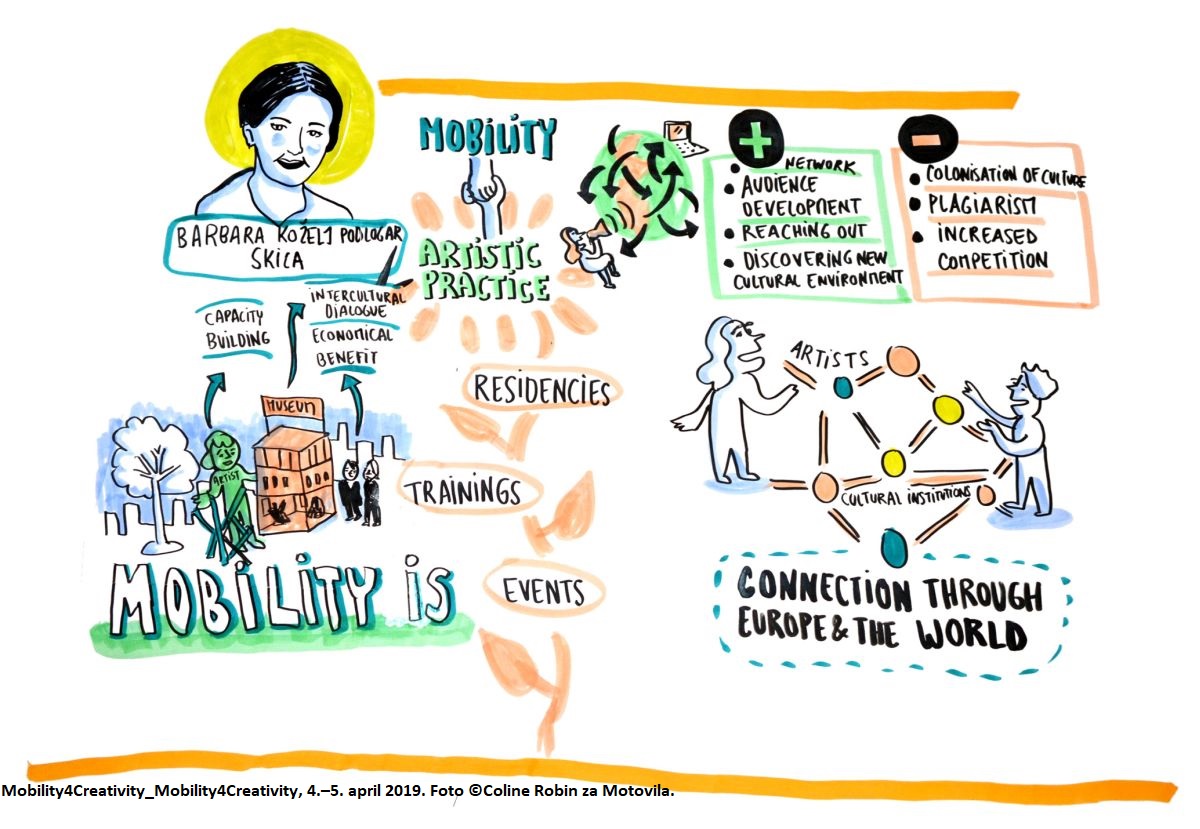Novice
Mobility is about results
Barbara Koželj Podlogar, cultural attaché and head of SKICA shared findings of the EU working group on mobility support. The conference titled “Mobility for Creativity” organised by Motovila in Ljubljana on 4–5 April 2019, explored the benefits and challenges of international mobility in the cultural and creative sector (CCS), especially putting mobility’s environmental impact to the test.

Barbara Koželj Podlogar, cultural attaché and head of SKICA (the Slovenian cultural institute based in Vienna, which works to find (co)production, presentation and promotion opportunities for Slovenian cultural events in Austrian institutions) shared findings of the EU working group on mobility support: “Mobility is about results – not just travelling across borders. It promotes the dissemination of fresh ideas and values, understanding of other cultures and traditions, as well as mutual learning.”
Indeed, crossing borders has always been a reality for artists, figuratively and physically. Mobility has become an integral part of the artistic practices and work life of artists and cultural workers. Today’s interconnectivity, not just online but also through travel and transport networks brings information from everywhere, quicker than ever. Such connectivity is radically redefining contemporary art: a new artwork can reach people from all over the world truly overnight. It also means greater competition for artists, especially younger ones, who must compete globally. At the same time, the globalised environment makes it difficult for an artist to preserve one’s uniqueness. She says, it’s not just a matter of copyrights, but also avoiding colonisation of culture.
Dividing mobility into 4 types: 1) Meetings/networking; 2) Creative process/residencies; 3) Promotion/cultural events; and 4) Learning process/training and exchange, she discussed the importance of cultural diplomacy in international relations. Cultural diplomacy serves to promote culture and language, mutual understanding between cultures, the exchange of cultural “products” and good practices, and provides a country with positive PR. At the same time, it should aim for diversity, flexibility, authenticity and partnership building.
Clearly, mobility plays a big part in cultural diplomacy, bringing essential economic and social benefits, through access to new markets, partnerships, networks, jobs and career opportunities in the CSS; by increasing and broadening audiences; and promoting cultural diversity and intercultural dialogue, thus helping to deepen values of plurality, diversity, integration and cooperation.
The effects of globalisation on cultural diversity are part of a challenging debate, and while it’s clear how important mobility is for artists/cultural professionals, it’s necessary to re-think mobility in connection with cultural diversity, ecological responsibility and sustainability. The first step must always be made on the level of national cultural policies. In addition, dialogue among the different sectors, like that of the Mobility4Creativity conference, is crucial in developing positive solutions.
Back to FULL REPORT by Jana Renée Wilcoxen for Motovila, Ljubljana 2019.
CC Attribution-NonCommercial 4.0 International (CC BY-NC 4.0).
Further information about the #Mobility4Creativity conference.
The event was organized by the Motovila Institute in cooperation with Arts and Theatre Institute / CED CZ, DutchCulture / CED NL, Centro de Informacão Europa Criativa / CED PT, CED Ireland – MEDIA Office Dublin, Ministry of Culture of the Republic of Croatia / CED HR, Federal Chancellery of Austria, Arts and Culture / CED AT, SCCA–Ljubljana and CMEPIUS.


